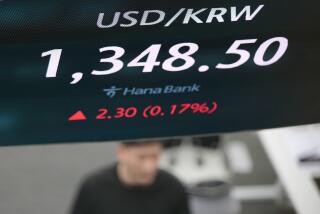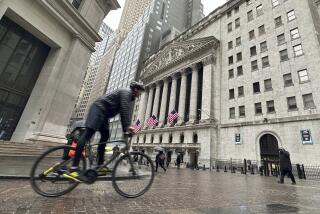Nasdaq at 5,000: Time to be very, very afraid?
For the longest time, I promised myself that I would stay in the stock market until the Nasdaq Composite index reached its dot-com era peak of just above 5,000. Then I’d bail out.
My will power and resistance to self-delusion are about to be tested, along with my intestinal fortitude. Because as of Monday, we’re there.
The Nasdaq closed Monday at 5,008.10. It’s the index’s first taste of the plus-5,000 stratosphere since those heady days of March 2000, when it topped out (on March 10) at 5,048.62. (See chart above.) Since then the Nasdaq has lagged its sister indices in the quest to set new records; the S&P 500 and Dow industrials hit records just before the 2007-08 crash, and started touching the heights again about two years ago. But the Nasdaq hadn’t come close to its March 2000 peak.
Until now. So the question is whether Monday’s close above 5,000 represents a return to the bad old days, when a “.com” after a company’s name was enough to propel it into IPO (initial public offering) heaven, even if it hadn’t seen a dime of profit in, like, ever. Or whether it’s a signal that this is the new Nasdaq, nothing like the old.
The latter case is what you’ll hear from, well, Nasdaq itself. The exchange issued a white paper last year, when the index crossed 4,000 for the first time since 1999, arguing that this time is different.
The index has only about half as many stocks now as it did in 1999 (about 2,500 versus 4,700), the exchange observed, and on average the companies are about twice the size they were back then. Price/earnings ratios are much, much lower -- 152 at the end of 1999 and only 31 at the end of 2013. (Now it’s about 27.) That’s certainly a much more conservative valuation than before. That’s true of the big players -- Microsoft’s P/E is 18 now, 73 then; Intel is about 15 now, 35 then; even the fabulously successful Apple is less than 18 now, compared with 37 then.
Some of the biggest Nasdaq players of the past -- those still in existence -- have been taken out and strung up. Yahoo’s P/E multiple was 787 at the end of 1999. Today it’s less than 6. Yes, Yahoo is only a shadow of its 1999 self, but investors are even more disinclined to bid up for conjectural profits.
This implies that the Nasdaq has a lot further to go before it runs out of steam, unlike the 5,000-handle Nasdaq of 2000. But there still are glimmers of the frenzy of the past. They’re worth watching very closely.
One is that bidding for stocks and companies in particular segments is still euphoric. Slap a “social media” tag on your company, and watch the numbers rise. We reported last year on Facebook’s $19-billion deal for a social media firm called WhatsApp, which had a handful of employees and an application that might or might not be sustainable.
What made the deal go, of course, was the extremely rich valuation of Facebook’s own stock, which it largely used as currency. This was a hallmark of the dot-com era, too. When Facebook bought WhatsApp, its P/E multiple was 113. Since then it’s come down to Earth a bit, to about 72. That’s on earnings per share of $1.11. Apple earns $7.39 per share and has one-fourth the P/E. Google, which earned nearly $21 per share over the last 12 months, has a P/E of only 27. Still think all those Nasdaq valuations are rational? In this group of companies alone, someone is out of whack.
So, sure. It may not yet be time to declare a Nasdaq bubble. But it’s wise to recall that bubbles, like gamblers’ winning streaks, generally are only visible in the rear-view mirror. The economists Kenneth Rogoff and Carmen Reinhart came to that general conclusion for a 2009 book after studying eight centuries of booms and busts. Their title quoted the claim one always hears about market frenzies, often just before the crash. They called it: “This Time is Different.”
Keep up to date with the Economy Hub. Follow @hiltzikm on Twitter, see our Facebook page, or email mhiltzik@latimes.com.







